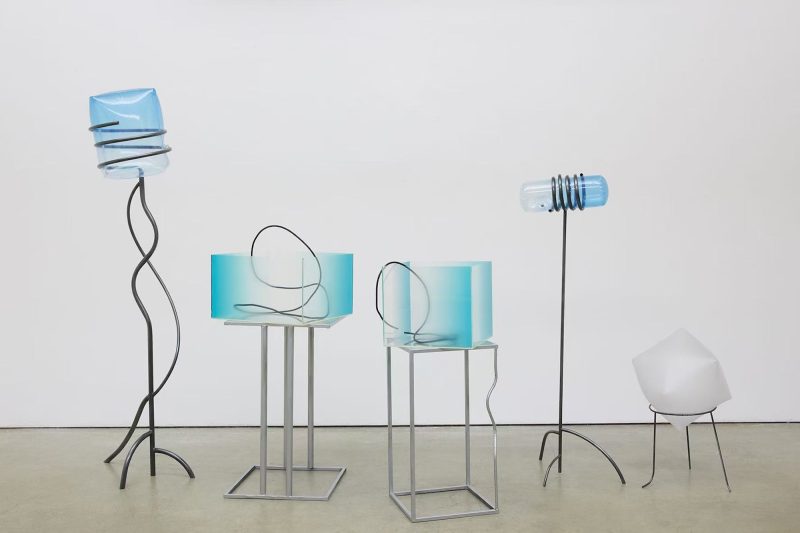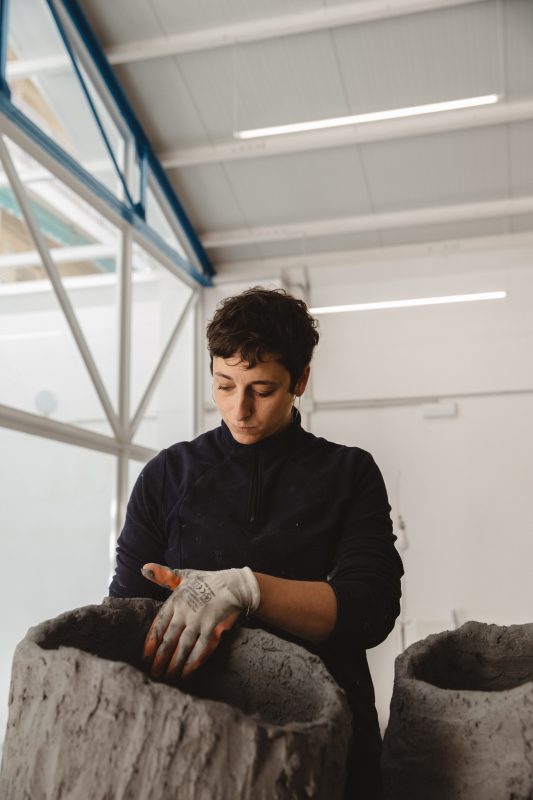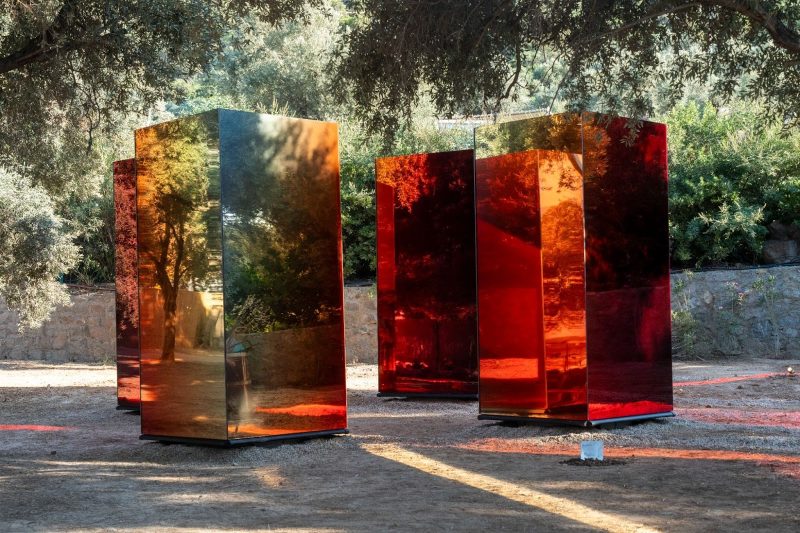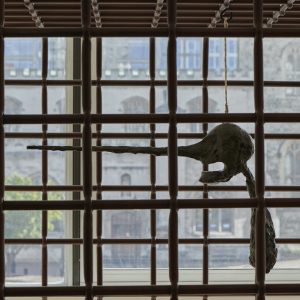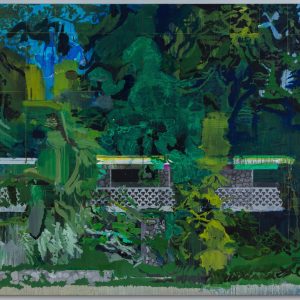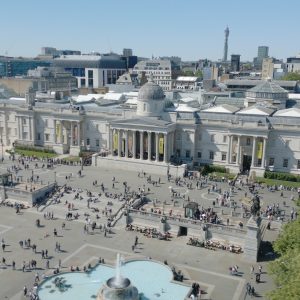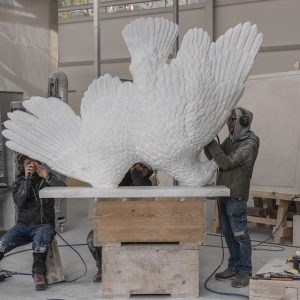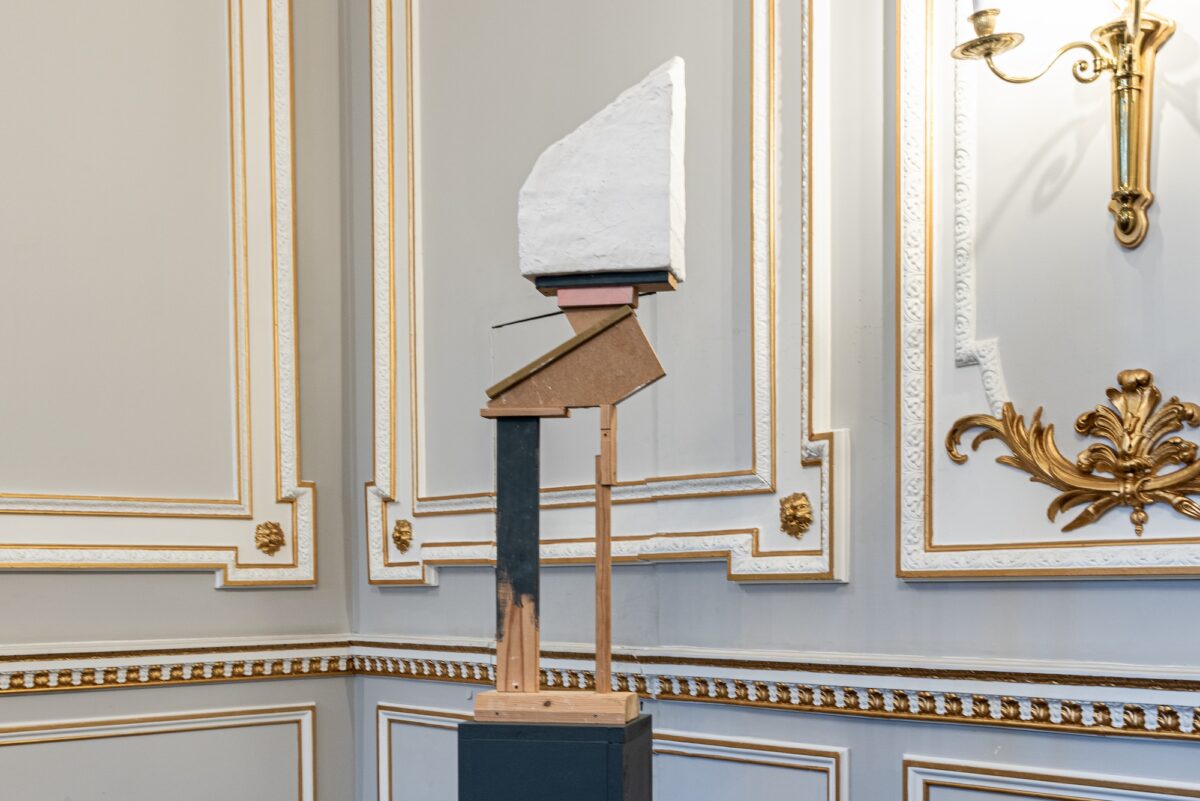
From co-curating Irish Art Now at the Embassy of Ireland in London to creating thought-provoking public installations like Echo, sculptor Joe Duggan’s journey as an artist is defined by a profound commitment to storytelling and an openness to embrace uncertainty.
Drawing inspiration from his Irish heritage and the experience of diaspora, Duggan’s work bridges sculptural practice and social discourse. His innovative use of salvaged materials reflects a deep engagement with memory, history, and the often invisible forces that shape our world. I met with Duggan to explore the inspirations, processes, and pivotal moments that have shaped his creative vision.
Jessica Wan: Tell us about the recent show you have co-curated at the Irish Embassy. What works and of yours are on view? How did the exhibition come about?
Joe Duggan: Irish Art Now at the Embassy of Ireland, London, is a bold statement and a long-overdue survey of Irish artists making their mark in Britain. Orla Jackson, my co-curator, and I recognized the absence of such an exhibition and set out to change that. We wanted to highlight the breadth and impact of Irish contemporary art and celebrate the significant contribution Irish artists make to the cultural fabric of their adopted city.
The show brings together 14 artists working in sculpture, painting, and printmaking, offering a dynamic cross-section of contemporary Irish talent. These artists challenge, redefine, and expand Irish cultural narratives on land, migration and folk practices while engaging with global discourses such as identity, power structures and how technology is impacting our lives.
The Embassy provides a fitting and symbolic setting—an extension of home that acknowledges Irish identity while amplifying its creative influence on an international stage.
I’m exhibiting two sculptures in the library, Untitled No. 18 (2021) and Untitled No. 69. (2021) Both works repurpose salvaged wood and old plaster of Paris, transforming discarded materials into poetic forms that explore materiality, and and shifting value systems.

JW: Your work often blurs the line between traditional sculpture and contemporary narratives. Can you share the inspirations or experiences that have most significantly shaped your artistic vision?
JD: I’ve always been drawn to things on the edges, to objects, stories, and materials that don’t fit neatly into categories. I find inspiration in literature, film, and philosophy, from Beckett’s dark humor to Phyllida Barlow’s raw materiality. I’m captivated by work that embraces contradictions and uncertainty.
I pay attention to things that are easily overlooked, like broken wood or discarded objects.These materials carry a history, and I like the challenge of creating new meaning from them . By rearranging and recontextualizing them, I create a friction between the familiar and the unexpected. I don’t set out with a fixed meaning in mind; instead, I let the process guide me, allowing space for play and discovery.

JW: How do the materials you choose influence the meaning of your sculptures?
JD: Materials aren’t just a means to an end—they shape the work itself. I’m drawn to salvaged and repurposed materials because they already have a history.
A broken object has lived a life before I find it, and that past is important. Working with found objects is also very economical.
In my recent work, ‘Natural Frequencies and Other Devices, I crafted sculptures designed to evoke the seemingly invisible yet impactful forces shaping our lives, such as wind, radio signals, electricity, and WiFi. Fashioned primarily from reclaimed wood, from a dead apple tree, these sculptures carry titles like “Wind Shaper” and “Particle Accelerator,” blending profundity with humour.
JW: As an Irish artist, do you see elements of Irish culture, history, or landscapes reflected in your work? How do these themes influence your creative process?
JD: Ireland is always there, though often in subtle ways. The storytelling tradition, with itswithits mix of humor, depth, and ambiguity, inform how I think about sculpture. I’m also drawn to the way objects hold history, much like how landscapes in Ireland bear the traces of past lives and shifting ownership.
There’s also a sense of displacement in my work, which reflects the Irish diaspora experience. I work with found materials,things that have been used, worn, and discarded because they carry a quiet sense of memory. These objects remind me of places from home, of things left behind but still resonant. I try to give them a new presence through exploring the tension between absence and permanence.
JW: Your sculptures often exist in shared spaces. How do you approach the challenge of making art that engages with the public and evokes diverse interpretations?
JD: Public spaces are unpredictable, which is what makes them interesting. A sculpture doesn’t just sit there i.t interacts with the people who pass by, with the architecture, with the weather. I want my work to invite that kind of engagement, to disrupt expectations, to make people pause for a moment.
A recent commission, Echo (2024), supported by the Henry Moore Foundation, gave me the chance to delve into this. Standing four meters tall in Russell Square Gardens, Echo appears as a precarious structure, resembling rough scaffolding with a heavy concrete boulder perched on top. Through its absurdity and monumentality, it challenges how we perceive permanence. It invites us to reflect on the fleeting nature of ideologies and the unseen forces that shape our world. I like how public art can become part of people’s everyday lives, sparking different reactions over time.
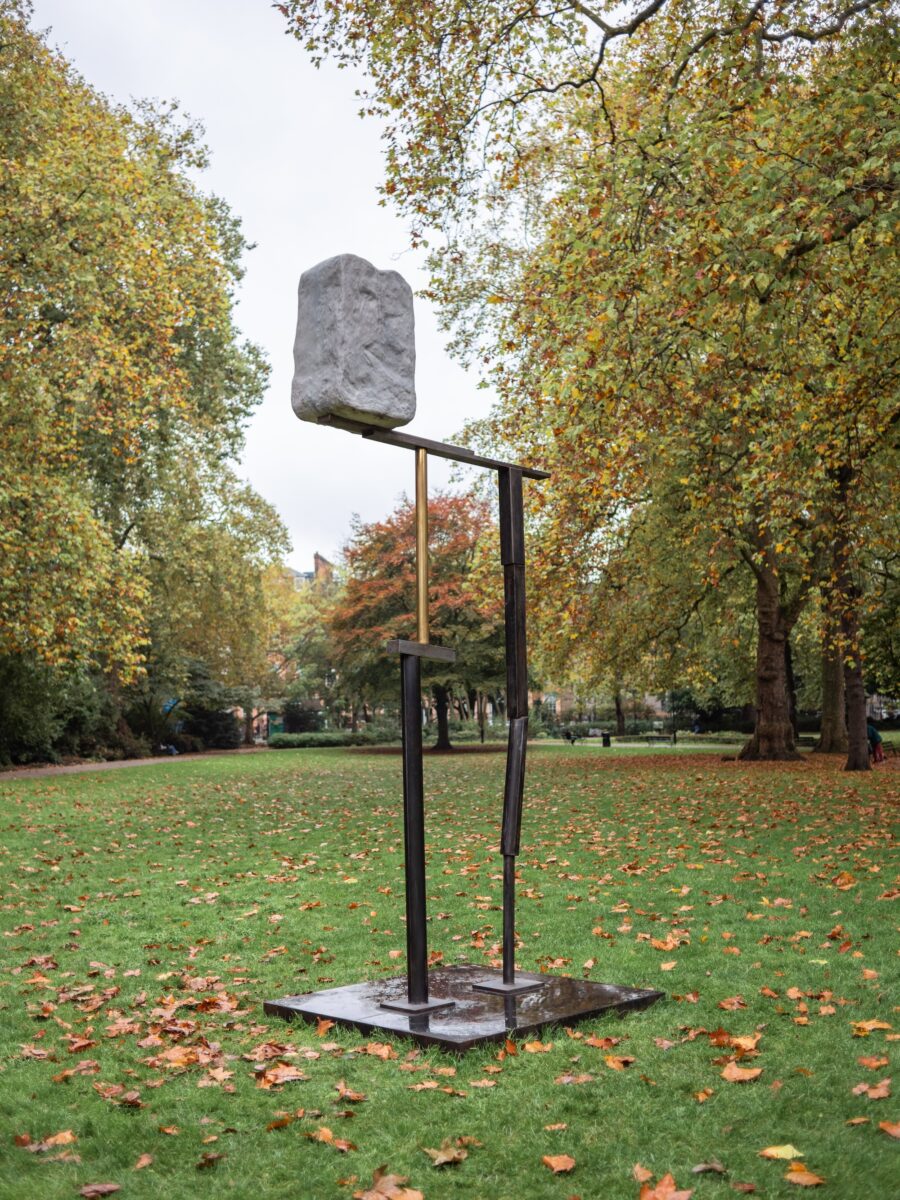

JW: Looking back at the beginning of your career to where you are now, how has your approach to sculpture evolved? Are there any pivotal moments or projects that marked a turning point for you?
JD: Early on, I thought art and life had to be completely intertwined. I threw myself into it with full intensity, convinced that was the only way to make something real. Then I read that Tom Waits had learned to separate his art from his life, and that changed my thinking.
I started out working with staged photography, but over time, I was drawn more and more to sculpture. I needed to work with my hands, to experiment with materials. A key moment was when I started using found objects after realizing how much history and meaning they already carried. Another shift came with my first large-scale commission, which forced me to think about space and audience in a new way. Now, my process is much more intuitive. I let the materials lead and allow the work to evolve naturally. The most exciting part is not knowing exactly where it will go.
Artists: Kathy Prendergast, Eva Rothschild, Emmet Kierans, Laura Ní Fhlaibhín, Anne Ryan, Hazel O’Sullivan, Richard Malone, Yuri Pattison, Eve O’Callaghan, Kerri McEvoy, Aislinn Finnegan, Oisín Byrne, Orla Jackson and Joe Duggan.
Irish Art Now curated by Joe Duggan and Orla Jackson. #irishartnow 8th – 28th January 2024
Embassy of Ireland How To Visit

